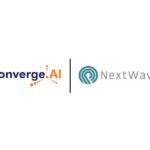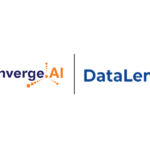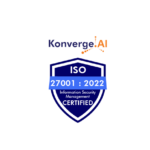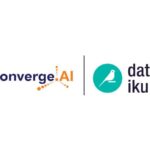
10 Essentials for a Successful Enterprise Data Strategy
Today there are many enterprise data platforms, recent announcements from major players have revealed fascinating shifts in strategy and technology. Here’s what enterprise leaders need to know about the changing landscape.
1.The “Shift Left” Movement
A central theme in these developments is the “Shift Left” approach, which emphasizes bringing AI closer to the data rather than the other way around. This strategy promises efficiency, performance and governance.
2.Microsoft Fabric’s Bold Database Play
Microsoft’s new Fabric database comes with native support for RAG (Retrieval Augmented Generation) and vector search capabilities. While impressive, enterprises should carefully evaluate whether this new offering aligns with their existing data architecture, especially given that similar capabilities have existed in platforms like SingleStore since 2017.
3.The Battle of Data Catalogs Intensifies
With Databricks open-sourcing Unity Catalog, Microsoft launching OneLake catalogue, and AWS introducing multiple cataloging solutions, enterprises face crucial decisions about their metadata management strategy. The redundancy between Microsoft’s Purview and OneLake catalogue raises questions about long-term product direction.
4.Real-time Intelligence Takes Center Stage
Microsoft Fabric is stepping into real-time analytics, taking on Databricks’ stronghold in “Data Intelligence.” It leans on Kusto Query Language (KQL) from the Microsoft ecosystem to focus on log and telemetry data—the bread and butter of real-time streaming. With MS Fabric Copilot as its answer to Databricks’ Genie, businesses now have powerful and competing. Choosing wisely will help you stay ahead! – Know more
6. Multi-Region Consistency Gets a Boost
AWS’s enhanced offerings in Aurora distributed SQL and DynamoDB’s strong consistency across multi-regions demonstrate the growing emphasis on globally distributed data operations. These features may remind you of SingleStore’s capabilities, which address crucial enterprise needs for global data consistency.
7. The Iceberg Effect
Apache Iceberg is emerging as a universal standard, with multiple major players including Databricks (through its Tabular acquisition) and AWS investing in its ecosystem. This convergence suggests Iceberg could become the de facto standard for data lake table formats.
8.SageMaker’s Expanding Universe
SageMaker Lakehouse, SageMaker AI Studio, and SageMaker Catalog sound impressive, but they raise some key questions for enterprises:
- With Glue Catalog and S3 metadata already serving catalog functions, when should enterprises prefer SageMaker Catalog over these options?
- Since S3 tables with Iceberg already offer lakehouse capabilities, how does SageMaker Lakehouse differentiate itself?
- SageMaker Catalog seems to aim at unifying siloed S3 data, much like Databricks’ Unity Catalog. How does it compare?
- And finally, what happens to Redshift Spectrum with these new services entering the picture?
Enterprises should take a measured approach by evaluating their current setup, testing new services through pilots, and understanding how these new tools align with their specific business needs, ensuring that they’re not adding unnecessary complexity while gaining value from the latest offerings.
9.The SingleStore Factor
Amidst the noise, SingleStore emerges as a dark horse in the enterprise data platform race. With native support for distributed SQL, OLTP-OLAP hybrid operations, langchain, RAG, and lakehouse implementation, it offers a robust, all-in-one solution. Unlike others, SingleStore doesn’t rely on external services, making it a strong contender to watch, especially if it announces something major at events like “Ignite,” “Reinvent,” or “Summit.”
10.The Low-Code/No-Code Application Race
Microsoft’s Power Apps (late 2023) lets “citizen data scientists” build custom UIs for data. Databricks followed with Databricks Apps, allowing users to create, deploy, and manage custom apps on the platform. AWS launched AWS App Studio at re:Invent, an AI-powered tool to build web apps quickly. These innovations highlight the shift toward empowering users with minimal coding skills to build applications directly on data platforms.
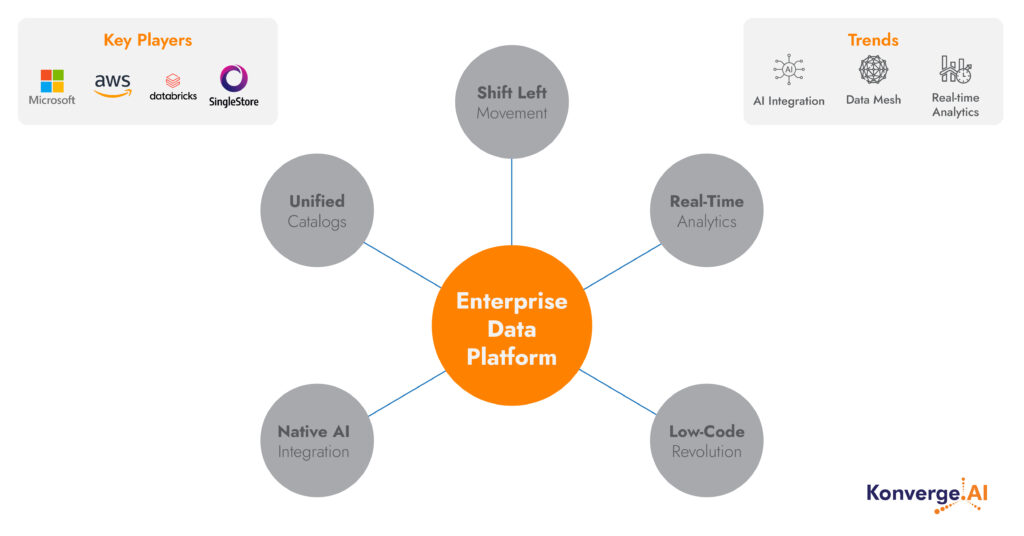
Major platforms are racing to integrate AI into their data services, but enterprises should assess what “native” integration means in each case, as implementations vary.
The enterprise data platform landscape is experiencing rapid evolution, driven by AI integration and the need for simplified, unified data management. Organizations must carefully evaluate these developments against their specific needs, considering not just the features being announced, but also the long-term implications for their data architecture and governance strategies.
While the major cloud providers are making significant strides, keeping an eye on innovative players like SingleStore could provide valuable alternatives or complementary solutions. A flexible, future-proof data strategy is key. If you’re looking for consultation, we’re always here to collaborate and bring innovation together. Schedule a call right now! Click here








